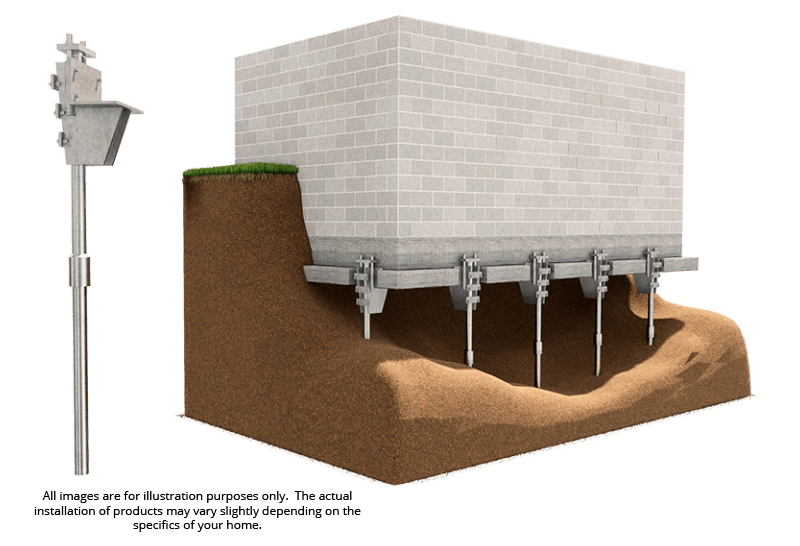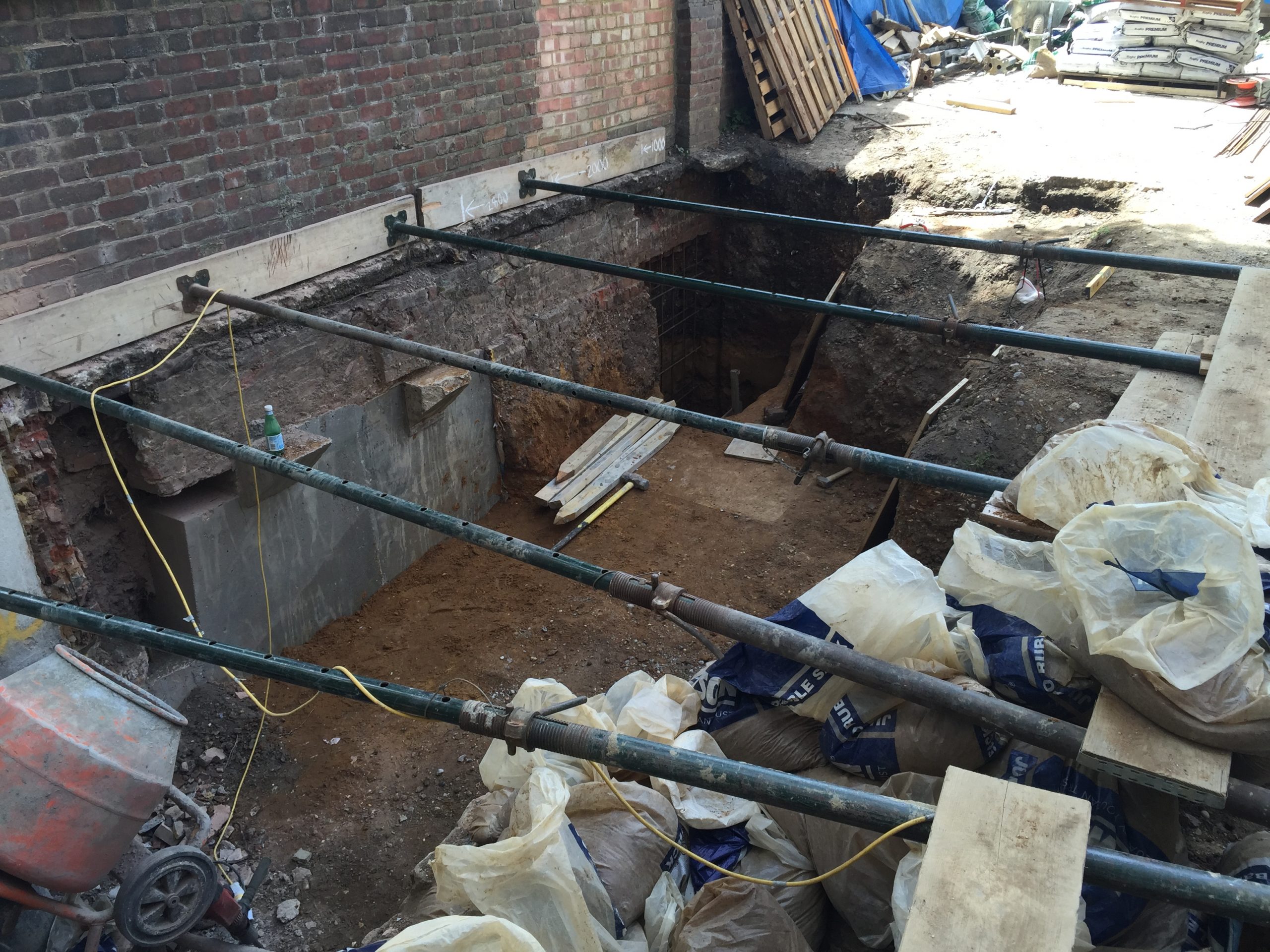Experience Deluxe Living: Walkout Basement Toronto Options Await
Experience Deluxe Living: Walkout Basement Toronto Options Await
Blog Article
Whatever You Need to Understand About Basement Foundation for a Stronger Home
Cellar base is a critical procedure that can significantly improve the structural stability of a home. Whether you are thinking about refurbishing your basement or have noticed signs of structure concerns, recognizing the ins and outs of support is important. From acknowledging the indications that your home may take advantage of underpinning to the expenses included and post-underpinning maintenance, this thorough overview will clarify the intricacies of this building method. Stay tuned to uncover exactly how basement foundation can not only reinforce your home however also provide assurance for years ahead.
Advantages of Basement Support
Basement underpinning provides significant structural reinforcement and enhanced stability to homes, making sure long-lasting safety and security and longevity. Among the essential advantages of basement underpinning is the capacity to strengthen the structure of a property, particularly in situations where the existing structure is weakened or compromised. By prolonging the depth or size of the structure, underpinning disperses the weight of the structure better, minimizing the threat of settlement or structural failure gradually.
In addition, cellar underpinning can create additional living area or enable the building and construction of a cellar in residential or commercial properties that do not currently have one. This can considerably increase the worth of the home and provide even more functional space for the property owners. In addition, underpinning can assist avoid water seepage and enhance the overall power efficiency of the home by sealing cracks and voids in the foundation.
Indicators You Need Underpinning
Provided the architectural reinforcement and stability advantages that cellar underpinning supplies, it is important to be knowledgeable about specific indicators that might signal the need for this fundamental conditioning technique. One typical indicator that your home might require base is the presence of splits in the wall surfaces, specifically if they are angled or broader than a quarter of an inch. Additionally, doors or windows that are sticking or no longer closing correctly might show a changing structure that needs support. Unequal or sloping floorings, especially in older homes, might additionally recommend fundamental problems that foundation can attend to properly. If you see gaps between the wall surfaces and the ceiling or between the walls and the flooring, it might be an indicator of structure negotiation, triggering the requirement for underpinning. Last but not least, any visible signs of dampness or water damages in the cellar can be a sign of a compromised foundation that requires underpinning to avoid additional architectural damage. Consistently checking your home for these indications can help you identify the demand for underpinning early on, guaranteeing the structural integrity of your residential or commercial property.
Process of Underpinning

To launch the process of base, an extensive analysis of the existing structure's condition is carried out by qualified structural engineers. This assessment includes evaluating the architectural honesty of the foundation, determining any indicators of distress or weakness, and establishing the suitable underpinning technique to reinforce the structure. Once the assessment is complete and foundation is deemed necessary, the underpinning procedure generally begins with digging deep into sections of the existing structure in a critical fashion. This excavation enables the setup of extra support, such as concrete or steel beams, underneath the foundation to improve its stability and load-bearing capability.
After the support group is in area, the next step entails slowly loading the excavated sections with high-strength cement to protect the brand-new structure support ready. Throughout the underpinning procedure, cautious tracking and changes are made to ensure that the foundation is properly enhanced which the structural integrity of the building is preserved. By following an organized technique and adhering to industry ideal techniques, underpinning can properly strengthen the structure of a home and minimize structural concerns.
Cost Considerations
Considering the financial effects of underpinning a cellar is vital for home owners aiming to enhance their residential or commercial property's structure. The cost of base can vary considerably depending on different factors such as the size of the cellar, the depth of the support called for, the present problem of the structure, and the particular underpinning technique picked. Generally, home owners can expect to pay anywhere from $1,000 to $3,000 per direct foot for underpinning solutions. This implies that for a typical 30-foot cellar, the overall expense might vary from $30,000 to $90,000 - basement underpinning services toronto.
It's critical for house owners to acquire several quotes from trustworthy underpinning service providers to guarantee they are obtaining a fair rate for the work required. In addition, it is very important to budget plan for any type of unexpected circumstances or extra costs that may emerge during the underpinning process. While the price of underpinning might seem high, it is a needed financial investment to make sure the architectural integrity and security of the home in the lengthy run.
Maintenance After Underpinning
Complying with the conclusion of cellar underpinning, routine upkeep is critical to maintain the structural enhancements and make sure long-lasting Discover More security of the home. Once support is done, home owners ought to faithfully monitor the basement for any type of indicators of cracks, water infiltration, or changes in the structure. Regular inspections by a certified specialist can help capture any concerns beforehand, avoiding possible pricey repair work in the go now future.
It is important to maintain proper water drainage around the foundation to avoid water damage. Seamless gutters need to be maintained clean, and downspouts must route water far from your home. Any landscape design around the foundation should incline away from the home to prevent water pooling near the basement walls.

In addition, maintaining constant moisture degrees within the basement is vital to stop moisture-related problems. Correct air flow and making use of dehumidifiers can assist regulate humidity degrees and secure the recently reinforced structure.
Final Thought
Finally, basement foundation is a valuable process for enhancing the foundation of a home. By recognizing the signs that indicate the need for foundation and recognizing the procedure and costs entailed, property owners can ensure the stability and safety and security of their building - toronto basement underpinning. Proper maintenance after underpinning is vital to lengthen the life expectancy of the foundation and prevent future concerns
One of the crucial advantages of basement underpinning is the capability to strengthen the foundation of a building, specifically in cases where the existing foundation is weakened or compromised. As soon as the evaluation is complete and underpinning is regarded necessary, the underpinning procedure generally starts with digging deep into areas of the existing foundation in a critical manner. The cost of underpinning can vary considerably depending on different variables such as the dimension of the cellar, the deepness of the support called for, the current condition of the foundation, and the certain underpinning method selected. When foundation is done, house owners must faithfully monitor the cellar for any kind of indicators of splits, water seepage, or shifts in the foundation.In conclusion, basement underpinning is look these up a helpful procedure for reinforcing the structure of a home.
Report this page